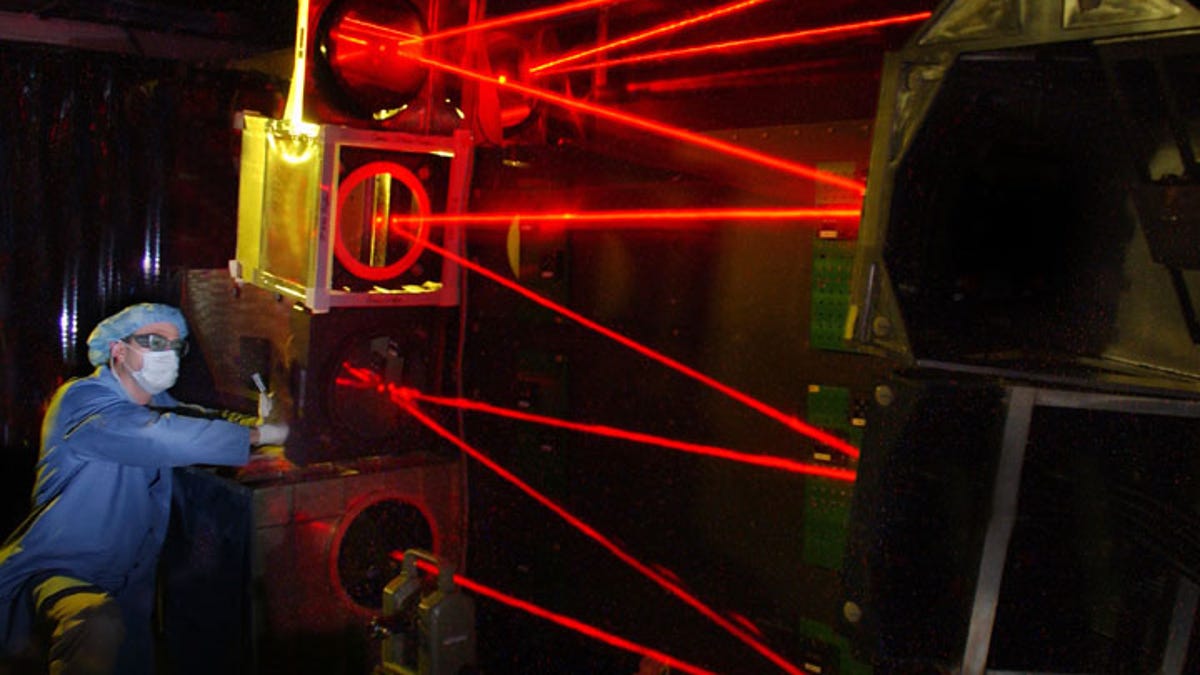Airborne Laser sticks to test regimen
Boeing and its directed-energy cohort say the 747-mounted laser weapon continues to pass milestones in testing. But what of it?

The Airborne Laser may have lost favor in Washington, but it's still going strong at Edwards Air Force Base.
Boeing, the prime contractor for the directed-energy weapons system, said Thursday that the ABL's high-energy laser earlier this week was fired in flight for the first time--though not at an external target. Instead, in a flight over California, the laser beam traveled only as far as an on-board calorimeter, which measured the beam's power. Boeing didn't say what that measurement was, but the system is generally referred to as "megawatt-class."
The one-of-a-kind ABL was built to test out and ultimately show off what a laser beam can do to a ballistic missile fired in anger. The goal, if and when all systems are go, is for the laser-equipped aircraft to home in on an ICBM while it's still early in its trajectory, holding the laser beam on the missile long enough to rupture its skin and thus knock it out of commission.
Ambitious plans for the Airborne Laser, however, have been considerably scaled back. Earlier this year, in revamping the Pentagon's budget and operations priorities, Defense Secretary Robert Gates said that a second prototype would not be built.
The core of the existing ABL is a chemical oxygen iodine laser, or COIL, and it's hardly man-packable machinery. The COIL system itself takes up the back half of a modified 747-400F, while the front half of the jumbo jet is given over to the beam control/fire control system.
Given that an aircraft in flight can be a fidgety beast, the ABL's ability to maintain precise alignments was a notable accomplishment, according to a Thursday press release from Northrop Grumman, which designed and built the high-energy laser:
ABL has to keep all of the powerful laser's optical components perfectly positioned as the aircraft vibrates and flexes during flight...Since we were unable to fly the kind of large concrete pads used to hold a ground-based laser's optics in place, we had to isolate the COIL's optics from the structure but also maintain alignment. So the team developed an optical bench isolation system that isolates disturbances caused by normal aircraft operations while maintaining alignment to the gain medium, or the source of a laser's optical power. It's like an automobile's 'smart suspension' that keeps the car riding smoothly at the same level over a bumpy road.
Last week, in a continuing series of piecemeal tests, the ABL engaged in an in-flight trial run against an instrumented target missile. The aircraft used its infrared sensors to locate the missile, then fired a pair of solid-state illuminator lasers that tracked the missile and gauged atmospheric conditions. "This test demonstrates that the Airborne Laser can fully engage an in-flight missile with its battle management and beam control/fire control systems," Michael Rinn, Boeing vice president and ABL program director, said in a statement. "Pointing and focusing a laser beam on a target that is rocketing skyward at thousands of miles per hour is no easy task."
A number of increasingly complex tests still lie ahead for the ABL, including firing the high-energy laser through the Lockheed Martin-developed beam control/fire control system and out of the nose-mounted turret. Before the end of the year, Boeing expects to do a full-fledged intercept test against a ballistic missile.

